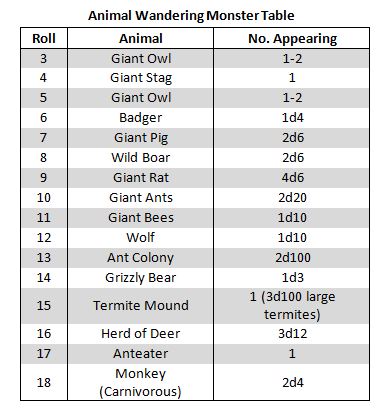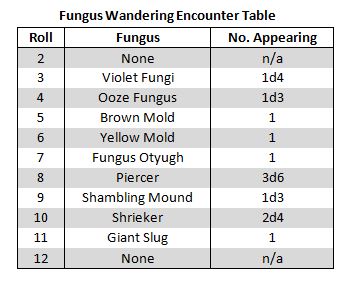This is the third post in my series exploring the creation of my new campaign setting, The Eleven Pillars. The first post answers some important questions about the setting, and can be found HERE, while the second post provides a map and some general terrain notes, and can be found HERE. If you haven’t read those two posts, some elements of this one might not make much sense – go ahead and read them and come back :)
I’m still thinking heavily about the Eleven Pillars setting and trying to bring several elements together at the same time. It is a funny thing, creating a new setting, because you have to walk a tight rope between the old and the new, between the fascinating and the familiar, between the interesting and the expected. Right now I am playing with the idea of giving the setting two distinct flavors – the Lowerlands (below the cloudline) will be done in old school hex crawl style. In contrast, the Mountainlands (above the cloudline) will utilize what might be thought of as city-heavy design – city based adventuring that is full of all of the intrigue of kingdoms fighting for power, but more complex due to the nature of the Pillars and the difficulties of traveling between them. I’m not sure how that part is going to play out just yet because I am focusing on the Lowerlands – busying myself with fleshing out the hex crawl.
I would like the tone of the hex crawl to be similar to John Stater’s Hex Crawl Chronicles. As a result, I am splitting the map into regions which will host particular factions and/or some specific terrain features. Flora and fauna are, of course, partly determined by the type of terrain in the hex, but each region will also have particular thematic elements that distinguish them. The next several posts will showcase one or two of these regions.
The Fraywood Region
The Fraywood region is located South of the Viridian Pillar and West of the Gamboge Pillar. This area was mentioned in my original post as a place that is rumored to contain an ancient seminary wherein a powerful magical artifact (the Mask of Hamman) is said to be hidden. On the map you see one hex which has a ruin located upon it. I won’t focus on the artifact or the ruin today because I am laying out facts/descriptions about the region for use in hex exploration. In a land where there is constant cloud-cover, one would expect that plants which traditionally need sunlight to survive may operate a bit differently. That is true of the Fraywood.
This large forest is made of tall “trees” which are hybrids between traditional woody plants and more fleshy fungal species – i.e. a cross between regular trees and mushrooms. These tall hybrids have evolved into many different species, some more closely resembles conifers (bear cones for reproduction and always have leaves or needles) and some are completely deciduous (lose their leaves during one or two seasons of the year). Most of the shorter bushes and plants found in the Fraywood are either completely fungal in nature or are some variation on the hybrid woody+fungus type. There are very few naturally occurring all-woody plants. Of course, normal oozes, slime molds, and lichens are also present. This ‘forest’ is a wetter, colder, darker forest than a traditional old growth or tropical forest, and it is obvious as soon as the PCs enter the area.
The floor of the forest is spongy with mosses and puddles of standing water are common. The trees are of varying heights, but the canopy is thick and many layered due to the caps of the trees (remember, these are more mushroom like than traditional trees, and so have caps rather than leafy canopies). The types of animals that are living in and traveling through the Fraywood are similar to what would normally be found in a traditional forest – herds of ungulates (e.g. deer, pigs), smaller mammals (e.g. squirrels, raccoon, foxes, and badgers), and larger mammals (e.g. monkeys, sloths, wolves, large cats), though they will be slightly different due to some obvious dietary changes. The major differences may be in the bird life and insects found in the fungal forests. Ants, Termites, and Beetles will be the most numerous insects and therefore birds (and mammals) that eat these types of insects will also be found in large populations. Insects in this region grow larger than normal, with many species being truly giant.
The Misnef
At the top of the food chain in the Fraywood are the Misnefs. Misnefs are thin humanoid creatures that stand between 6.5 and 7 feet tall. The skin of a Misnef ranges from a light brown/cream color to a deeper reddish hue. They have grotesquely long legs, short stubs for arms, and gills ringing their elongated necks. Though these mushroom-style gills are not usually found on non-plants, these humanoids are, biologically speaking, fully mammalian. Their coloration and shape provide them with natural camouflage as they blend in with their surroundings very well. They are intelligent, patient predators who stalk their prey in silent groups. They sit in their hunting grounds and wait patiently (sometimes for hours without moving) for an appropriate prey item to come along, after which they stalk it for several hours before finally approaching the victim. The Misnef hunting party ambushes its prey so quickly and silently that the poor creature hardly has time to react. The Misnef suffocates its prey with its neck gills as it uses its sharp teeth to puncture its prey’s skin and soak up the life fluids of the victim. Though the Misnef is an omnivorous species, most of its diet is derived from the proteinaceous flesh of forest animals.
Along with being extremely intelligent, Misnefs are fiercely territorial. They mark their tribal territories with medium sized obelisks made of a petrified fungus material buffed up to a hearty shine. It is not unusual to see two obelisks with slightly different shapes, colors, or symbols right next to each other – one marking the end of one territory and the other marking the beginning of a second territory. Misnefs sometimes use insect pheromones to train giant gnats or beetles to remain close to the obelisks, acting as veritable guard animals for the tribe’s territory. Misnefs lair underground, with the external entrance doubling as a burial mound for the dead of the tribe. Misnefs send individual scouts to patrol and check the territory markers, but while hunting they travel in packs of 3-12.
Random Encounters in the Fraywood
A party traveling within the boundaries of a Misnef tribe territory during the day have a 20% chance of encountering a Misnef hunting party and a 10% chance of encountering a solitary Misnef patrolling the border. Misnef do not patrol at night. If a Misnef is not encountered, roll for wandering monsters as normal – if an encounter is indicated, roll 3d6 and consult the Fraywood Forest Random Encounter table below:



That’s all I have for the Fraywood right now. I will be tackling the grassland prairie south and west of the Fraywood, along with the river areas in my next post.
Until next time, I wish you good gaming!
~DMSamuel
